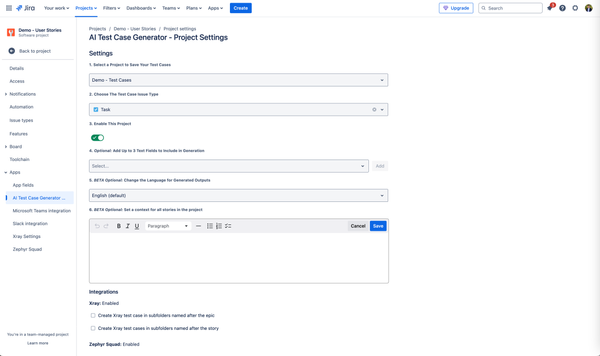Mastering User Story Design in Jira and Azure: A Comprehensive Guide for Agile Teams
Learn how to master user story design in Jira and Azure with our comprehensive guide. Ideal for agile teams, this post covers the human-centric approach to requirements, enhancing collaboration and delivering real value to users in software development.

Introduction to User Story Design in Software Development
In the dynamic world of software development, the way teams capture and communicate requirements is crucial. This is where the concept of user story design in Jira and Azure becomes pivotal. It offers a human-centric approach to requirement gathering, focusing on delivering real value to the end user. Digital product managers, project managers, and software development teams are increasingly adopting user story design to streamline their workflows and enhance collaboration.
"Effective user story design in Jira and Azure is not just about documenting requirements; it's an art of translating user needs into a roadmap for creating impactful, user-centric software solutions. By mastering this, teams can bridge the gap between technical feasibility and user desirability, turning visions into realities that resonate with their audience."
Understanding the Basics
User stories are a foundational element of Agile methodology. They describe a software feature from the perspective of the end-user. Unlike traditional methods that focus on technical specifications, user stories emphasise user needs and experiences. This approach aligns development efforts with user expectations, ensuring that the final product truly resonates with its audience.
The Importance of User Stories in Agile Frameworks
In Agile frameworks, user stories play a critical role. They serve as the building blocks of the development process, guiding teams in creating products that are both functional and user-friendly. The use of user stories fosters a culture of open communication and feedback, enabling teams to adapt quickly to changes and user feedback. This agility is essential in today's fast-paced digital environment, where user needs and market trends evolve rapidly.
The Anatomy of a Great User Story
A well-crafted user story typically includes three key components: a description, acceptance criteria, and value statement. The description should be concise and focused, clearly stating what the user wants to achieve. Acceptance criteria outline the conditions that must be met for the story to be considered complete, ensuring clarity and alignment among team members. The value statement highlights the benefit or outcome that the user will realise, keeping the team centred on the user's perspective.
User Story and the INVEST Principle
A critical aspect of crafting effective user stories in Jira and Azure is adhering to the INVEST principle. INVEST stands for Independent, Negotiable, Valuable, Estimable, Small, and Testable. This principle guides teams in creating stories that are not only well-defined but also manageable and meaningful. Each story should be a standalone unit, open for discussion, deliver clear value, be easy to estimate in terms of effort, small enough to be easily completed, and testable to ensure it meets requirements.
Writing User Stories: A Step-by-Step Guide
Writing a user story is both an art and a science. The process typically involves:
- Identifying the User: Clearly define who the story is for. Is it for a new user, an admin, or a different segment of your audience?
- Defining the Need or Problem: What specific need or problem does the user face that your story aims to address?
- Articulating the Goal: What is the desired outcome from the user's perspective?
- Specifying Acceptance Criteria: Detail the conditions that must be met for the story to be acceptable.
- Refining and Reviewing: Collaborate with team members to refine and iterate on the story, ensuring it meets all necessary criteria.

Common Mistakes in User Story Design and How to Avoid Them
Common pitfalls in user story design include creating stories that are too vague, too large, or not user-focused. To avoid these, ensure that each story has a clear, concise goal and is centred around the user's needs. Breaking down larger stories into smaller, more manageable ones can also help in maintaining focus and clarity.
Tools and Techniques for Enhancing User Story Design
Various tools and techniques can enhance user story design in Jira and Azure. These include user story mapping, which helps visualise the user's journey; backlog grooming sessions, where stories are reviewed and prioritised; and story point estimation, which assists in gauging the effort required for each story. Leveraging these tools effectively can lead to more accurate planning and a better understanding of user needs.
Integrating User Stories with Product Backlog Management
Effective user story design is closely tied to efficient product backlog management in Jira and Azure. By integrating user stories into the product backlog, teams can prioritise tasks based on user value and business objectives. This integration ensures a clear roadmap for development and helps in managing resources more effectively. Regular backlog refinement sessions are essential to keep the backlog relevant and aligned with project goals.
Case Study: Successful User Story Design in Practice
Let's explore a real-life example of successful user story design. A software development team working on a healthcare app used Jira and Azure to manage their user stories. They began by creating detailed user personas to understand their users' needs better. Each story was then crafted following the INVEST principle, ensuring it was actionable and valuable. By regularly revisiting and refining their backlog, the team was able to adapt to changing requirements, resulting in a user-friendly app that significantly improved patient engagement and care coordination.
Advanced Tips for Mastering User Story Design
For those looking to master user story design, consider these advanced tips:
- User Feedback Loop: Regularly gather and incorporate user feedback into your stories to ensure they remain relevant and user-centric.
- Collaborative Writing: Involve various team members, including developers, designers, and stakeholders, in writing and refining user stories.
- Continuous Learning: Adapt and refine your approach to user story design based on past experiences and project outcomes.
Conclusion and Future Trends in User Story Design
In conclusion, user story design in Jira and Azure is an evolving practice critical to successful software development. As we look towards the future, trends such as increased automation in story generation, greater emphasis on user experience, and more sophisticated integration with other Agile tools are likely to shape this field. Staying informed and adaptable will be key for digital product managers, project managers, and development teams striving for excellence in user story design.
Frequently Asked Questions About User Story Design in Jira and Azure
What is a user story in Jira and Azure, and why is it important?
A user story in Jira and Azure is a short, simple description of a software feature written from the perspective of the end-user. It's important because it helps teams focus on delivering real value to users, ensuring that the software developed meets their needs and expectations.
How does the INVEST principle aid in user story design?
The INVEST principle ensures that user stories are Independent, Negotiable, Valuable, Estimable, Small, and Testable. This aids in creating clear, concise, and achievable goals, which are crucial for effective Agile development.
Can you give an example of a good user story?
A good user story might be: "As a frequent traveler, I want to easily filter flight searches by flexible dates so that I can find the best travel deals."
How often should the product backlog be refined?
The product backlog should be refined regularly, usually once per sprint. This ensures that it remains up-to-date with the latest project needs and priorities.
Are there any common pitfalls in user story design?
Common pitfalls include creating stories that are too vague, too large, or not centred on user needs. Avoid these by ensuring clarity, focus, and user-centricity in each story.
How can feedback be integrated into user story design?
Feedback can be integrated by regularly reviewing user stories with stakeholders, conducting user testing, and adjusting stories based on the insights gained.
What role do acceptance criteria play in user stories?
Acceptance criteria define the conditions that must be met for the user story to be considered complete. They provide clear guidelines on what is expected, aiding in quality assurance and project alignment.




